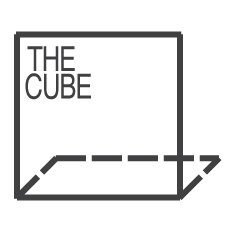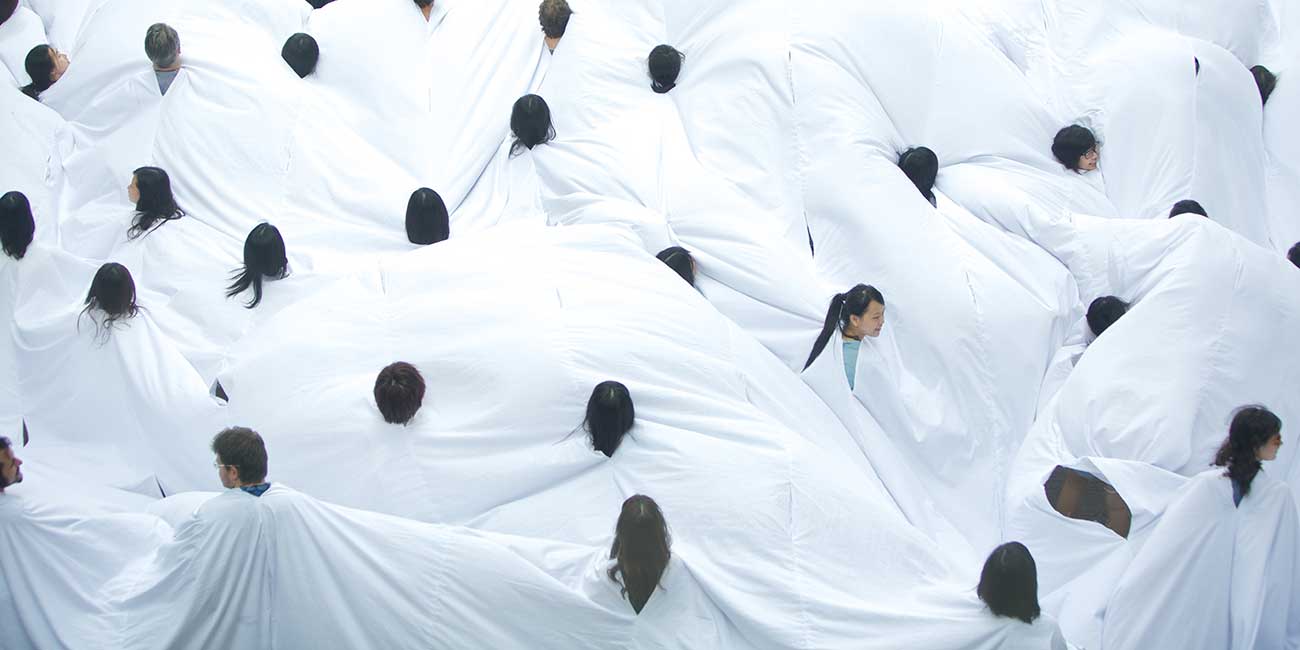
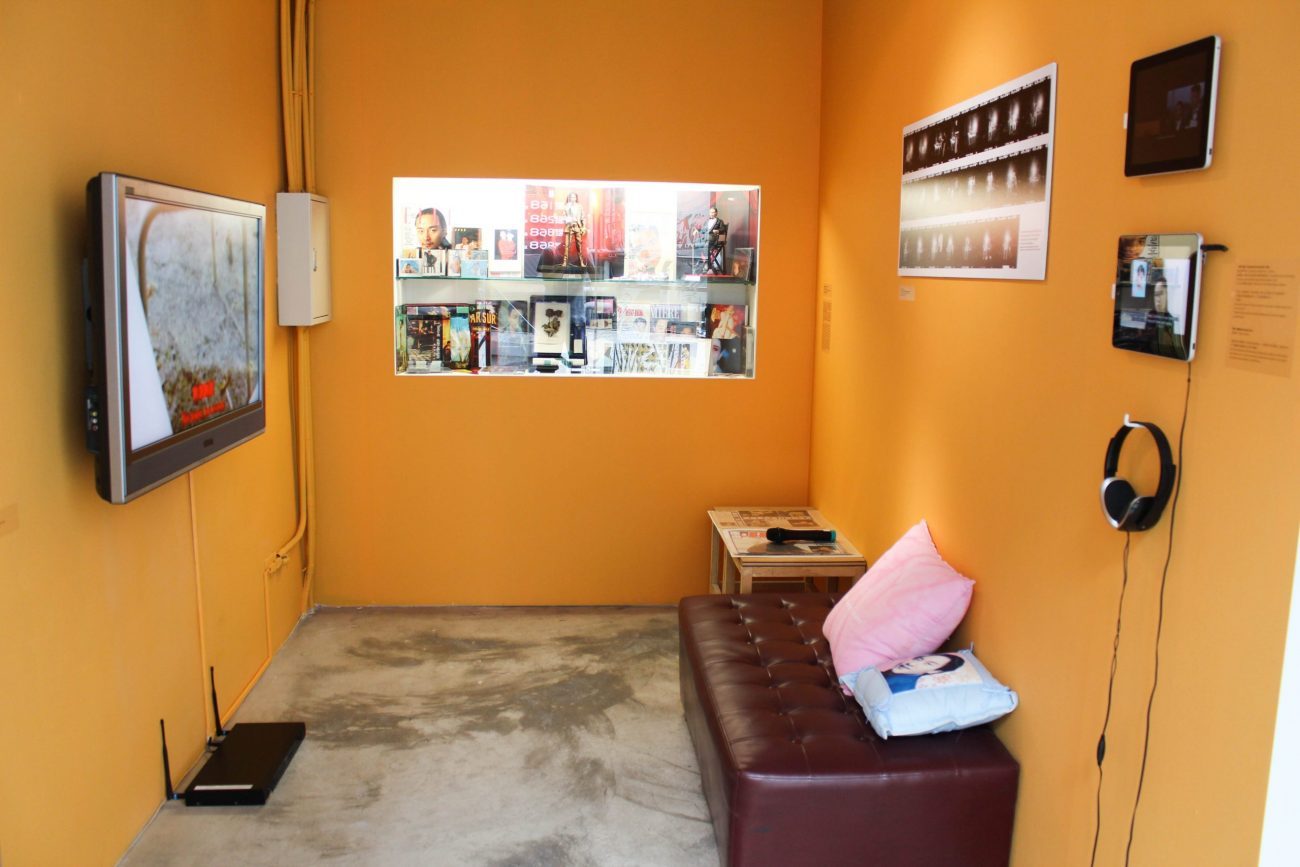
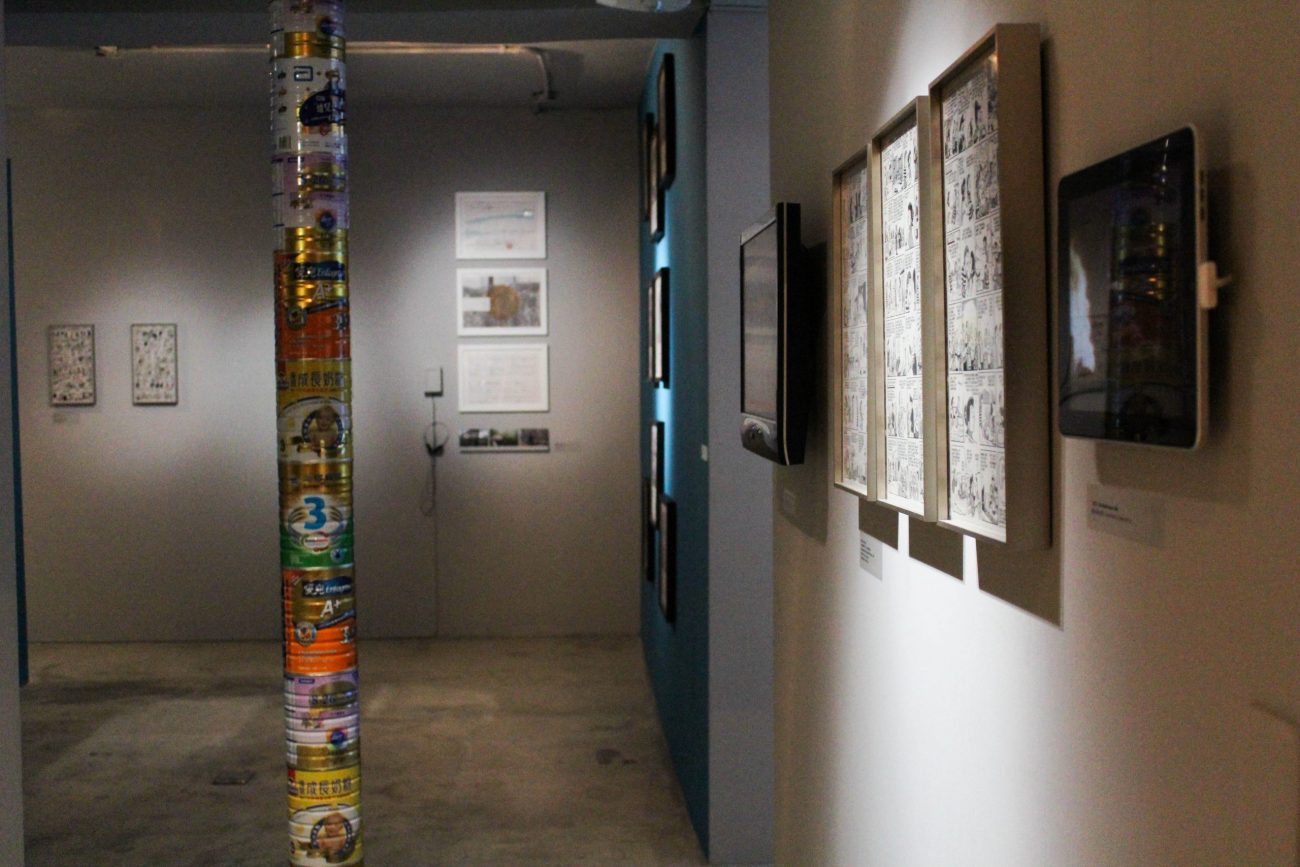
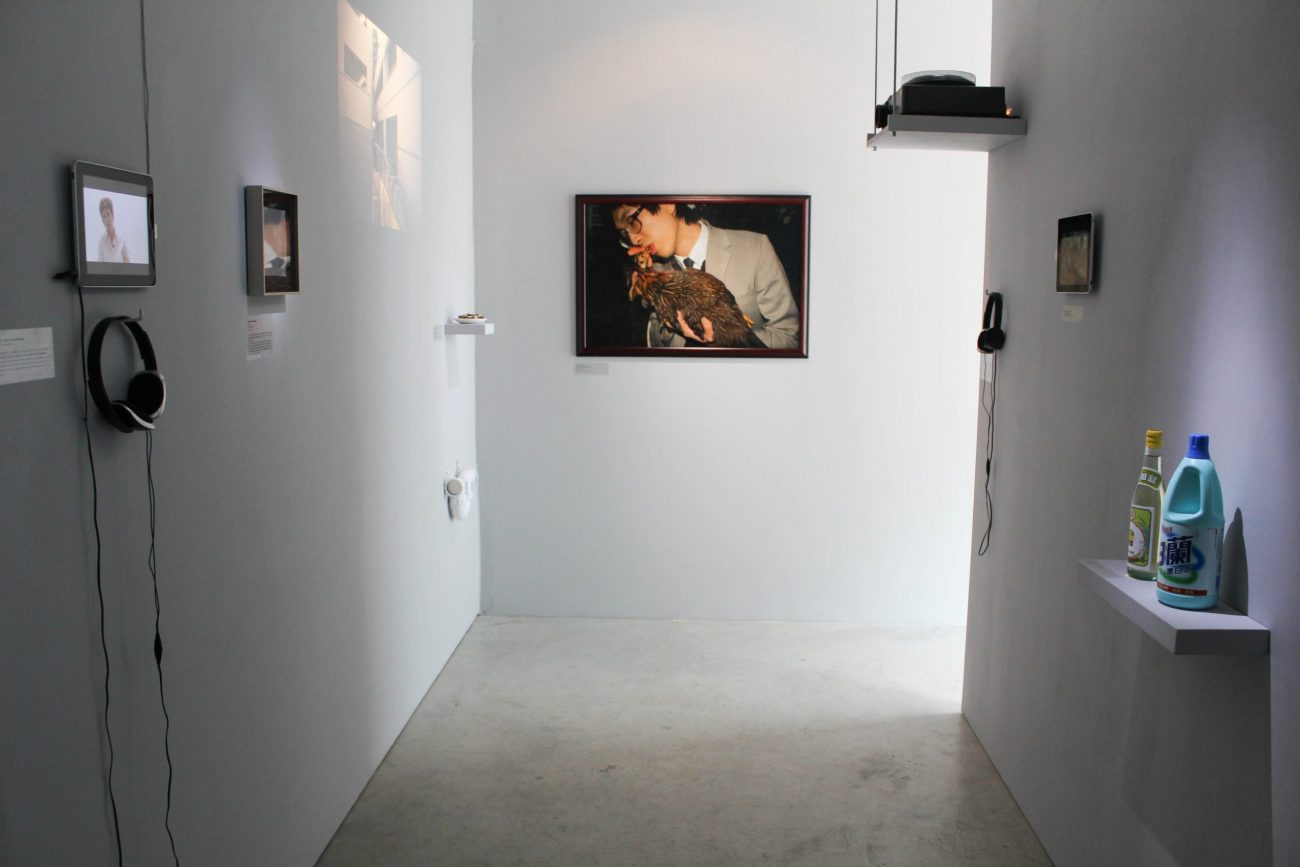
A Journal of the Plague Year, Fear, Ghosts, Rebel, SARS, Leslie and the Hong Kong Story starts from the events that affected Hong Kong in the spring of 2003: the most significant airborne epidemic in recent years – the SARS crisis, coupled with the tragic death of pop figure and icon Leslie Cheung. The unparalleled shutdown of the city and the atomization of society in quarantined segments led to an unexpected shift in the political awareness of the Hong Kong citizenry.
This exhibition navigates through disparate but interconnected narratives and contributes to a critical discussion about recent history whose implications extend beyond Hong Kong. The fear of contamination, physiological and cultural, the anxiety of societies encountering alterities and facing their own projections and prejudices are explored through the contribution of artists of various generations, shown together with historical artifacts and pop culture ephemera.
TheCube Project Space is delighted to host A Journal of the Plague Year’s first touring stop in Asia. Taiwan and Hong Kong share many chapters of their history. This exhibition wants to serve as a start for a reflection on this shared historical background and rhetoric narratives between the two regions facing a tumultuous present and an uncertain future under the same specter.
Artists: Ai Weiwei (China), Bernd Behr (Germany/Taiwan), Natalia Sui-hung Chan (Hong Kong), Oscar Chan Yik Long (Hong Kong), Yin-Ju Chen (Taiwan), George Chinnery (British Empire), Megan Cope (Australia), Dung Kai-Cheung (Hong Kong), Larry Feign (Hong Kong), James T. Hong (Taiwan/USA), Irene Kopelman (Argentina/Netherlands), Firenze Lai (Hong Kong), Lam Qua (China), Lee Kit (Hong Kong), Len Lye (New Zealand), Ma Liuming (China), Fionnuala McHugh (Northern Ireland/Hong Kong), Moe Satt (Myanmar), Josef Ng (Singapore), Pak Sheung Chuen (Hong Kong), Para/Site Art Criticism Class 2003 (Hong Kong), Lygia Pape (Brazil), Apichatpong Weerasethakul (Thailand), Adrian Wong (Hong Kong), Ming Wong (Singapore), Ricky Yeung Sau-churk (Hong Kong), Samson Young (Hong Kong), Mathias Woo & Edward Lam (Hong Kong), Zuni Icosahedron (Hong Kong)
Curators: Cosmin Costinas and Inti Guerrero
Organizers: TheCube Project Space and Para Site
Venue Support: Insomnia Café
Project Manager of the Taipei iteration of the exhibition: Freya Chou
Special Thanks: FLTW, Chen Po-Wen, Chou Yu-Cheng, Michael Lee, Peng Pei-Cheng, tamtamART TAIPEI IPIX
Adviser: Ministry of Culture of R.O.C.
Sponsor: Hong Kong Arts Development Council, Department of Cultural Affairs of Taipei City
Supported by the Hong Kong Arts Development Council (ADC). Hong Kong Arts Development Council fully supports freedom of artistic expression. The views and opinions expressed in this project do not represent the stand of the Council.
About the Exhibition
A Journal of the Plague Year
by Cosmin Costinas and Inti Guerrero
Starting from the events that affected Hong Kong in the spring of 2003, the exhibition traces the different narratives, historical backgrounds as well as the implications of these events in relation to the contemporary culture and politics of Hong Kong and the world.
The city has a subjectively internalised history of epidemics and of representations in the colonial era as an infected land that needed to be conquered from nature, disease and oriental habits in order to be made healthy, modern and profitable. These narratives culminated with the identification of the bacillus causing the plague during an epidemic in Hong Kong in 1894, in Para Site’s current neighbourhood. This discovery contributed to a dubious association of the disease with Asia and heightened the “yellow peril” scares in Europe and America at the time. In Hong Kong, the fear of infecting agents has always resonated with a fear of other people, quarantine has mirrored exclusion, whilst epidemiological, racial and cultural contamination have shared the same language.
When the city became the epicenter of the most significant airborne epidemic in recent years – the SARS crisis of 2003 – the unparalleled shutdown of the city and the atomisation of society in quarantined segments led to an unexpected shift in the political awareness of the Hong Kong citizenry. Just after the end of the epidemic, record numbers of people turned out to protest against a new internal security law imposed by Beijing, causing its shelving and, more importantly, the emergence of an active political community. After that moment, the image of a de-politicised and soullessly pragmatic commercial hub could not anymore tell the whole story about Hong Kong.
Less gloriously however, the main measure taken to alleviate the economic meltdown caused by SARS, the option for Mainland citizens to visit the territory for the first time on individual visas caused another major shift in the identity of the city, and its relationship to Mainland China. Medicalised vocabularies and imageries reminiscent of epidemics have been used in regard to the growing number of Mainland Chinese in Hong Kong, seen as pathogens corrupting an otherwise healthy social body and as milk formula sucking locusts. Again, an epidemic becomes the backdrop of paranoia and hate, but the fear of the Chinese, of their vast numbers and uncivilized habits, is now harboured by fellow Chinese rather than by the self-content Europeans of the last plague visitation a century ago. This essentialising xenophobia has come to be a defining factor in the relationship between the two sides of the Shenzhen River, and paradoxically has complicated the pro-democracy (and anti-Beijing) discourse and activism, rejuvenated in the wake of the SARS crisis.
These ambivalences in the identity of Hongkongers are reflected in the figure of Leslie Cheung, the hugely iconic figure, actor and singer who committed suicide at the height of the SARS crisis by jumping off the Mandarin Oriental Hotel, in Central Hong Kong. His shocking death at the darkest hour of the darkest times in recent memory played its part in the mobilisation of Hongkongers, who turned out in huge numbers for Leslie’s funeral, ignoring the health warnings in effect at the time. Gor Gor’s (“Big Brother” in Cantonese – as Leslie has been known) life and career have contributed to forging a strong sense of identity for Hong Kong culture, in spite of his queer and often contrarian persona. The versatility of the roles he played reflected (and arguably enhanced) the versatility of the city’s identity over the past decades, before and after the handover. And his ghostly presence continues to do so.
The exhibition aims to navigate through these disparate though interconnected narratives and to contribute to a critical discussion about Hong Kong’s recent history with the help of works by local and international artists, as well as of pop cultural artifacts and archival documents.
About Curators
Cosmin Costinas (b. 1982, Satu Mare, Romania) is the Executive Director/Curator of Para Site, Hong Kong. He was the Curator of BAK, basis voor actuele kunst, Utrecht, Netherlands (2008-2011), co-curator (with Ekaterina Degot and David Riff) of the 1st Ural Industrial Biennial: Shockworkers of the Mobile Image, Ekaterinburg, 2010, and Editor of documenta 12 Magazines, Kassel/Vienna (2005-2007). At Para Site, Costinas curated the exhibitions: Ten Million Rooms of Yearning. Sex in Hong Kong (with Chantal Wong, 2013); Taiping Tianguo: A History of Possible Encounters: Ai Weiwei, Frog King Kwok, Tehching Hsieh, and Martin Wong in New York (with Doryun Chong, 2012).
Inti Guerrero is an art critic and curator based in Hong Kong and periodically working since November 2011 in San Jose, Costa Rica as the Associate Artistic Director of TEOR/éTica. Recent exhibitions include A Chronicle of Interventions, Tate Modern, London (co-curated with Shoair Mavlian); Josephine Baker and Le Corbusier in Rio – A Transatlantic Affair, Museum of Art of Rio, Rio de Janeiro (co-curated with Carlos Maria).
Opening: Saturday, June 28, 3pm
TheCube Project Space
Add: 2F, No. 13, Aly 1, Ln. 136, Sec. 4, Roosevelt Rd., Taipei City, Taiwan
Insomnia Café
Add: No. 8, Lane 60, Tai-Shun Street, Taipei City, Taiwan
Panel discussion at Insomnia Cafe: June 27, 7-9pm
Yin-Ju Chen (artist), Freya Chou (curator), Cosmin Costinas (curator), Inti Guerrero (curator), James T. Hong (artist and filmmaker), and Lee Kit (artist).
Category:
Date:
2014 年 6 月 28 日

